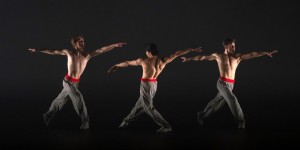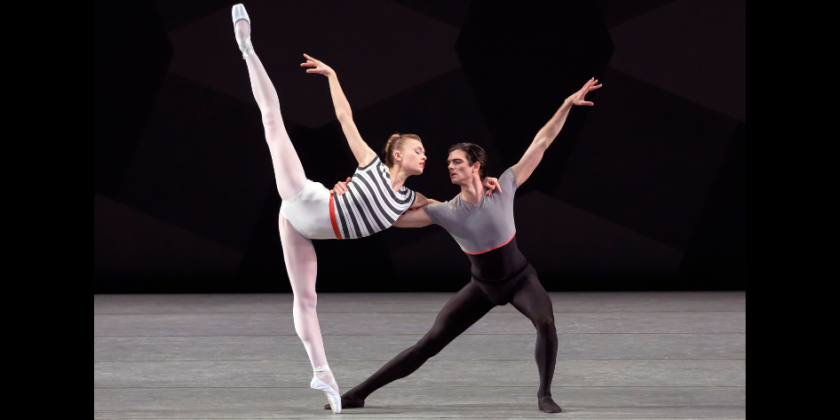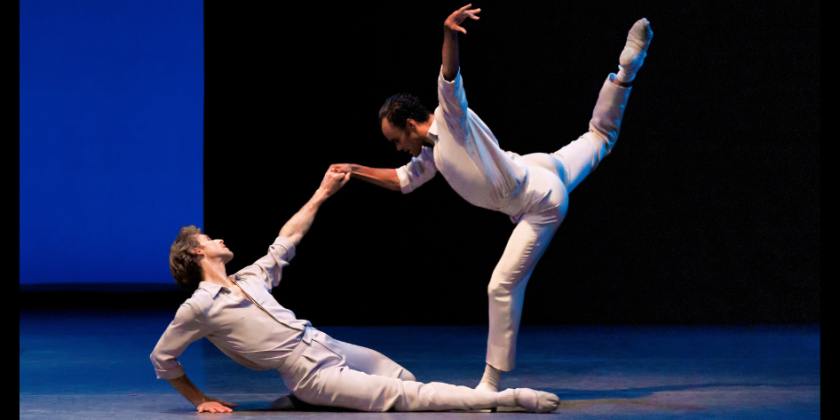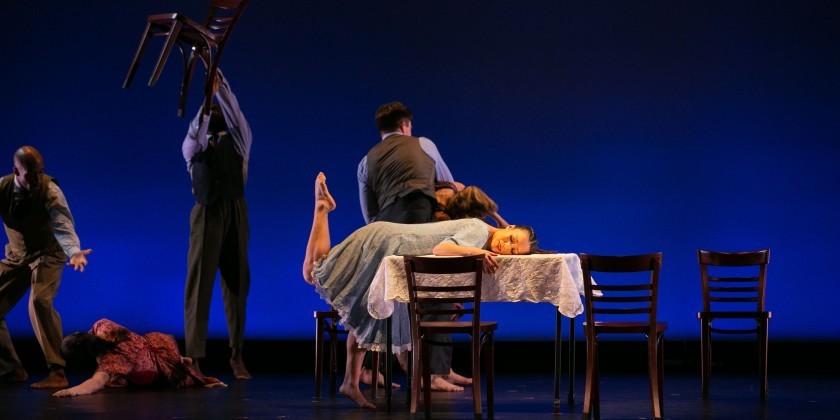IMPRESSIONS: New York City Ballet's "All Balanchine II": Maria Tallchief Centennial & Ashley Bouder's Farewell
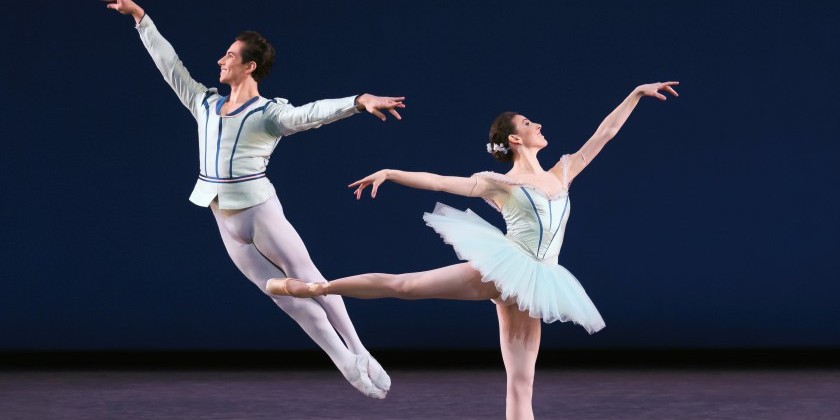
Scotch Symphony
Choreography: George Balanchine // Music: Felix Mendelssohn // Scenery: Horace Armistead // Costumes: Karinska // Lighting: Mark Stanley // Featured Dancers: Indiana Woodward, Jovani Furlan, Baily Jones, Victor Abreu, Mckenzie Bernardino Soares
Sylvia: Pas de Deux
Choreography: George Balanchine // Music: Léo Delibes // Costumes: Karinska // Lighting: Mark Stanley // Dancers: Tiler Peck, Roman Mejia
Firebird
Choreography: George Balanchine, Jerome Robbins // Music: Igor Stravinsky // Scenery and Costumes Designs: Marc Chagall // Scenery Execution: Volodia Odinokov // Costumes Execution: Karinska // Original Lighting: Ronald Bates // Lighting: Mark Stanley // Featured Dancers: Ashley Bouder (Firebird), Gilbert Bolden III (Prince Ivan), Meaghan Dutton-O’Hara (Prince’s Bride), Alec Knight (Kastchei the Wizard)
Venue: David H. Koch Theater at Lincoln Center
Dates: February 5, 8, 11, 13, and 18, 2025
Shortly before watching the recent Philadelphia Eagles’ Super Bowl massacre of the Kansas City Chiefs, I took in a screening of Imagining the Indian: The Fight Against Native American Mascoting, an absorbing 2022 First Run Features documentary (streamed in February exclusively on OVID.tv). It’s about the movement to eradicate offensive references to North America’s Indigenous peoples in sports-team mascots. The film got me thinking about the oblivious years I spent as a high-school cheerleader for teams we called the “Redskins” (their name has now been altered to the “Skins,” though I’m not sure that’s much better).
Also, I learned that, despite protests, and changes made by other sports franchises, the Kansas City Chiefs refuse to let go of their moniker (originally chosen in tribute to a non-Native American, former KC mayor). They forbid fans from wearing face paint or feather headdresses in their home venue, Arrowhead Stadium, but still allow a modified version of the controversial “tomahawk chop” arm gesture.

While my big-game loyalties were divided this year — I grew up in the Philly suburbs, but later spent five years as the dance critic for The Kansas City Star — culturally, Native American issues have been persistently top of mind. So, when deciding what New York City Ballet program to review this winter season, I opted for “All Balanchine II,” a triple bill of stunning ballets choreographed by George Balanchine. All were created for Maria Tallchief, the legendary American ballerina of Osage descent, and were being presented as the company’s centennial celebration of her birth. One of America’s pioneering virtuosic ballerinas, and the first to attain “household name” popularity, Tallchief was born in Fairfax, Oklahoma, on January 24, 1925, and raised on an Indian reservation. Proud of her heritage, Tallchief refused early pressure to “Russify” her surname, bucking a trend among non-Russian, mid-20th-century dancers aspiring to careers in ballet.
Yet while the ravishing George Platt-Lynes photograph of Tallchief reproduced in the program’s Playbill shows her wearing a feather atop her head, that has nothing to do with her Native-American roots. Rather, it’s part of the costume for her signature role, the fantastical title creature in Balanchine’s Firebird. With evocative Stravinsky music, and scenery and costumes by celebrated painter Marc Chagall, the 1949 story ballet made Tallchief a star, and served as a doubly apt closer for the performance I attended on February 13, 2025.

In addition to honoring Tallchief, that night’s show — played to a packed house — marked principal dancer Ashley Bouder’s final NYCB appearance. Renowned for her fierce technique, Bouder, 41, chose to end her 25 years with the troupe in Firebird, neatly book-ending her career by performing the same leading role she had been thrown into as a teenager, with just two hours of rehearsal, during her first year with the company. Over time, Firebird’s choreography has been altered to suit different ballerinas, Jerome Robbins contributed a new ensemble sequence for the evil wizard and his subjects, and Chagall’s scenery and costume designs were re-interpreted by Volodia Odinokov and Karinska, respectively.
Yet the ballet remains one of Balanchine’s least “dancey” and most theatrical works. As every detail of the storyline is clearly heard in the music, and the visual feast put forth by the painterly backdrops and elaborate costumes conjures the ethnicity, humor, and magic needed to fuel the narrative, Balanchine steps back, in a sense, and provides minimal choreography, aside from the Firebird’s showy passages. There are a lot of processions, a bit of mime, some pared down character dancing, and what feels like a costume parade, with dancers walking and tilting their heads in display of their extravagant attire. And the ballet’s breathtaking final scene is essentially a tableau.
Sadly, Bouder’s farewell performance in the flamboyant role of the mythical bird who protects a Russian Prince and brings peace to the land was not a memorable event. A dancer like Bouder, whose greatness lay in her athleticism — her remarkable strength, speed, and accuracy of execution — has a more difficult time continuing to captivate audiences as her body changes with age than might a ballerina distinguished, say, for her expressive artistry. With her diminished physical prowess, the impact of Bouder’s dancing was over-shadowed by the production’s flashy visual elements. Thus, her good-bye performance is best appreciated as an homage to the radiant dancer Bouder had been, and to the special kinetic ebullience she introduced to the ballet stage.

As if the evening wasn’t special enough already, prior to Firebird we were treated to a sublime performance of Sylvia: Pas de Deux (1953), a wowing classical “work out” created to display Tallchief’s superb technique, and here danced by the incomparable Tiler Peck, joyfully partnered by Roman Mejia. As far as I’m concerned, any performance by Peck is a red-letter occasion, and this difficult pas de deux provides the perfect showcase for her flawless technique and superlative understanding of music-movement relationships. Its fussy Delibes score provides a delightful collection of rhythmic nuances, shapely melodies, and variegated orchestral colors, all of which Peck sensitively captures with precisely calibrated accents, luxuriant phrasing, and diverse movement dynamics. She hears and reveals music with a thoroughness matched by no other ballerina dancing today.
Rounding out the evening of splendid, Tallchief-associated ballets was the program opener, Scotch Symphony (1952). Think Brigadoon meets La Sylphide. To majestic Mendelssohn music, men in traditional Scottish garb perform unison maneuvers with military bearing and partner women in Romantic-style tutus. Elements of Scottish folk dance inflect the choreography’s classical-ballet footwork and carriage of the arms, while notions of thwarted pursuit of the unattainable female emerge in the ballet’s narrative whiffs, and a castle appears in the misty, mountainous background. Though a tiny, tidy dancer, unlike Tallchief in physique and performance style, Indiana Woodward gave deft interpretation to the ballet’s leading role, a sylph-like embodiment of the Romantic feminine “ideal.” While Balanchine is said to have created the ballet in tribute to the Highlands, after an inspiring trip to Scotland, it is nonetheless interesting to note that, despite her fame as an iconic Native American, Tallchief, on her mother’s side, was of Scottish-Irish ancestry.







